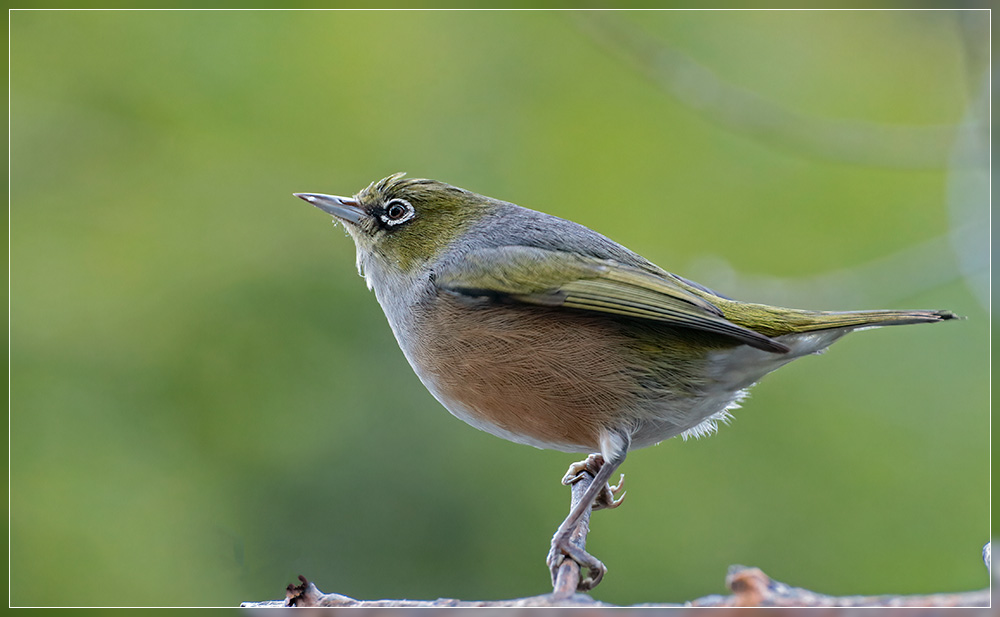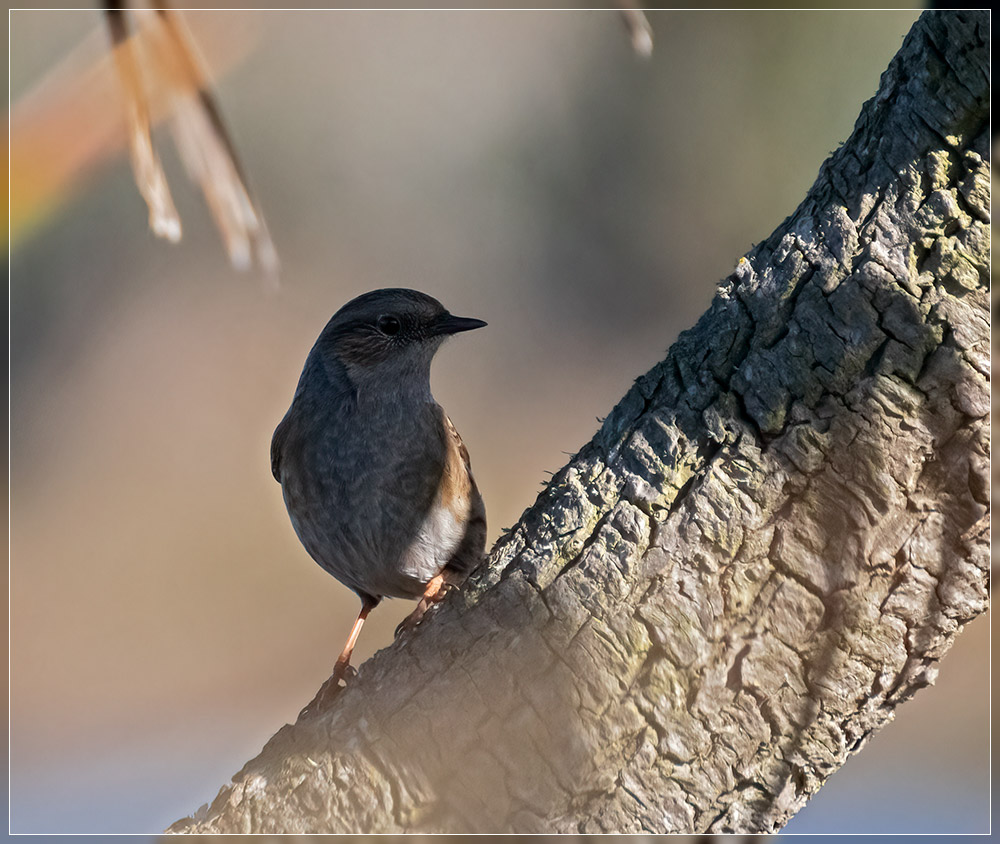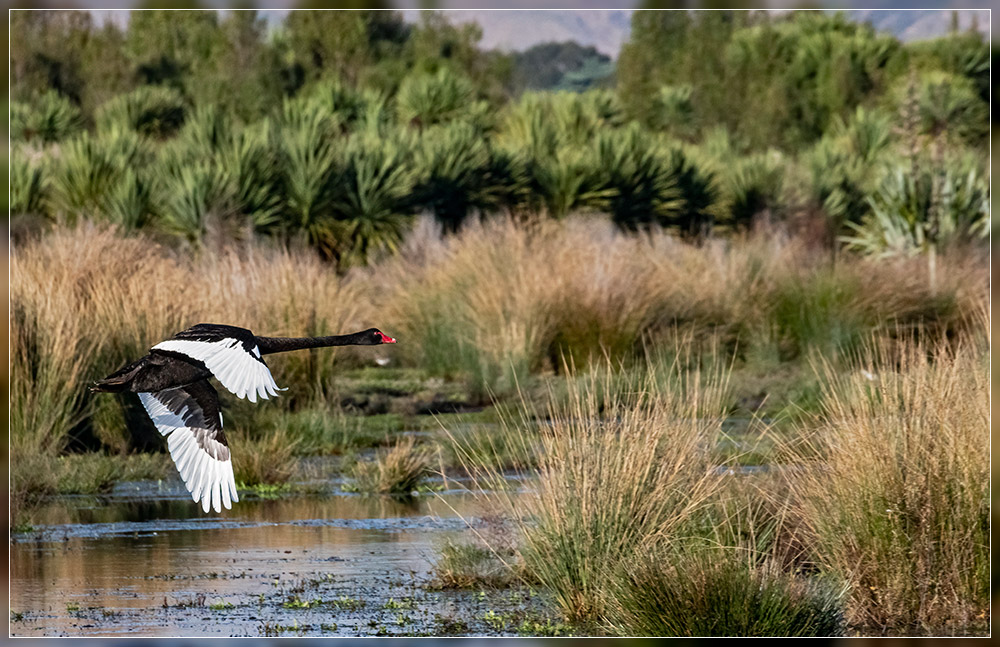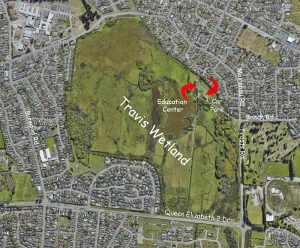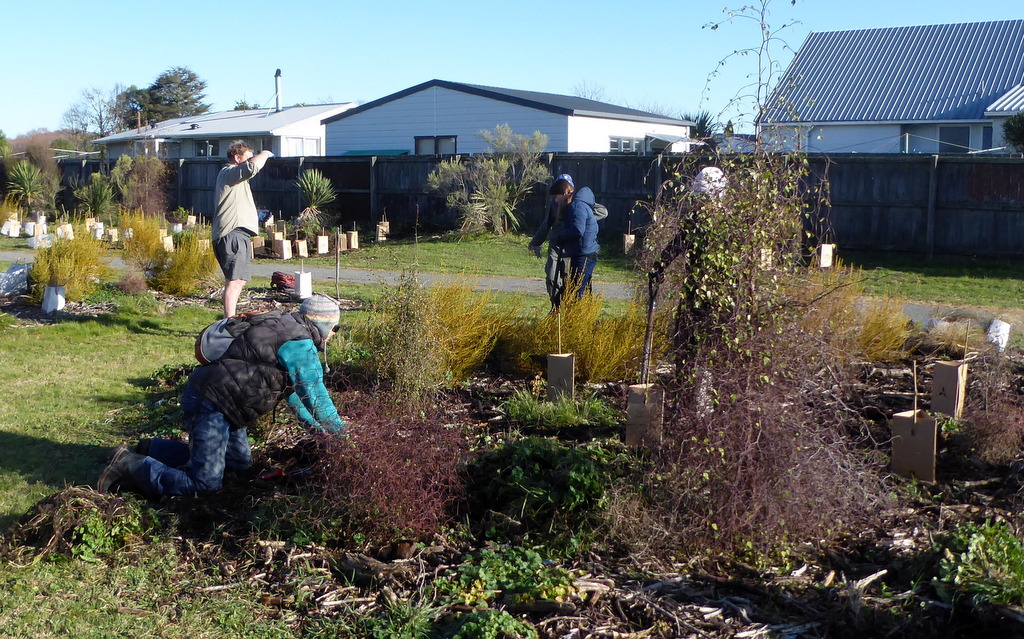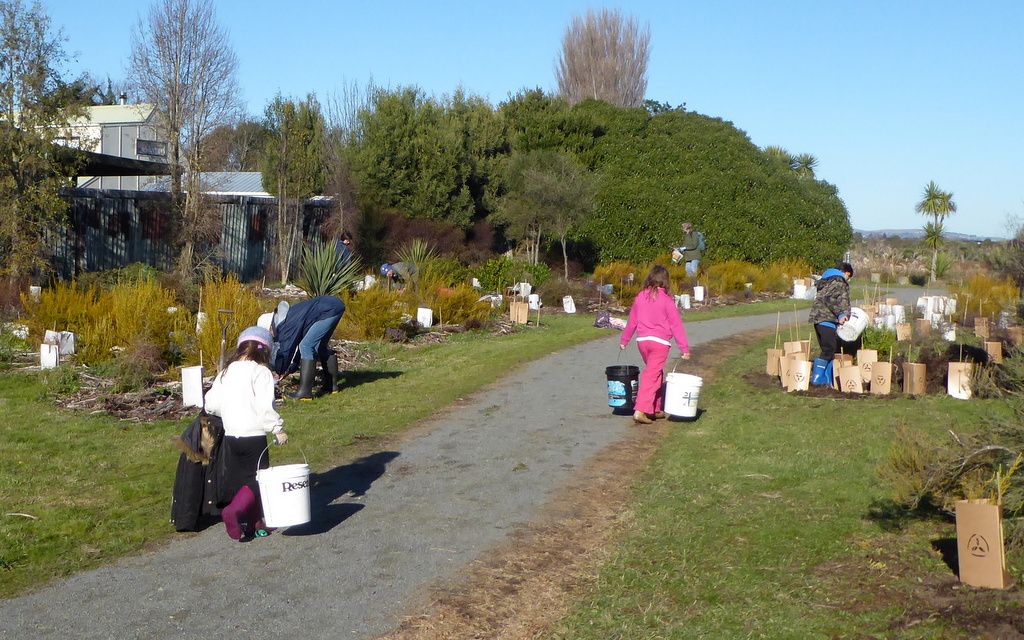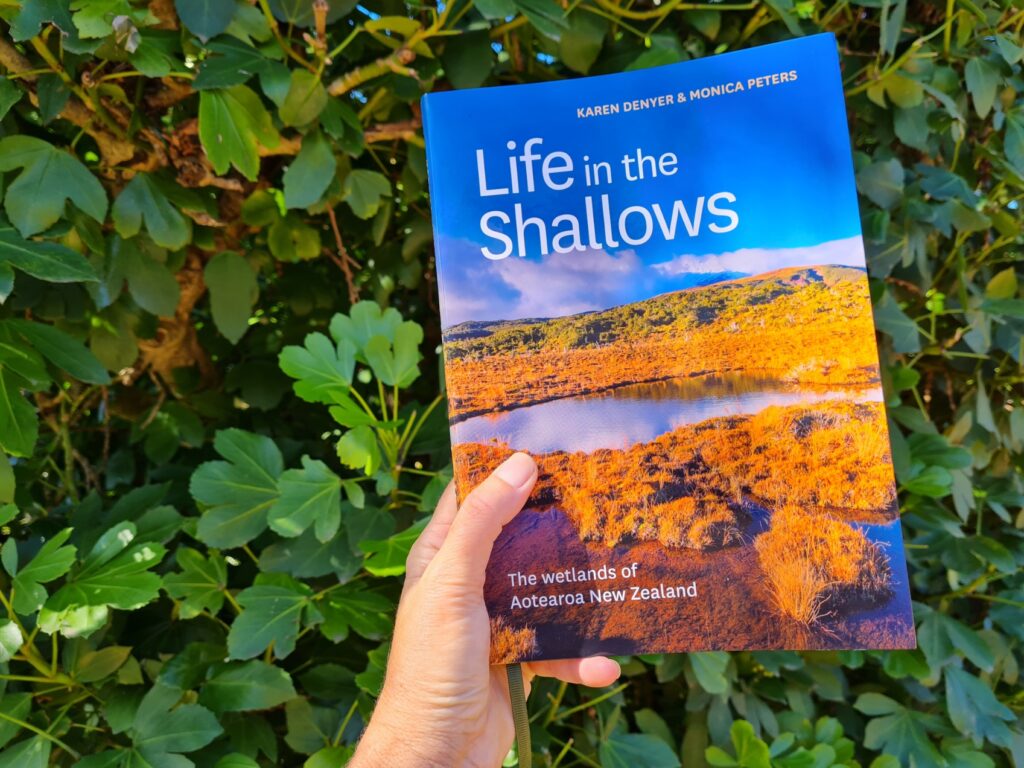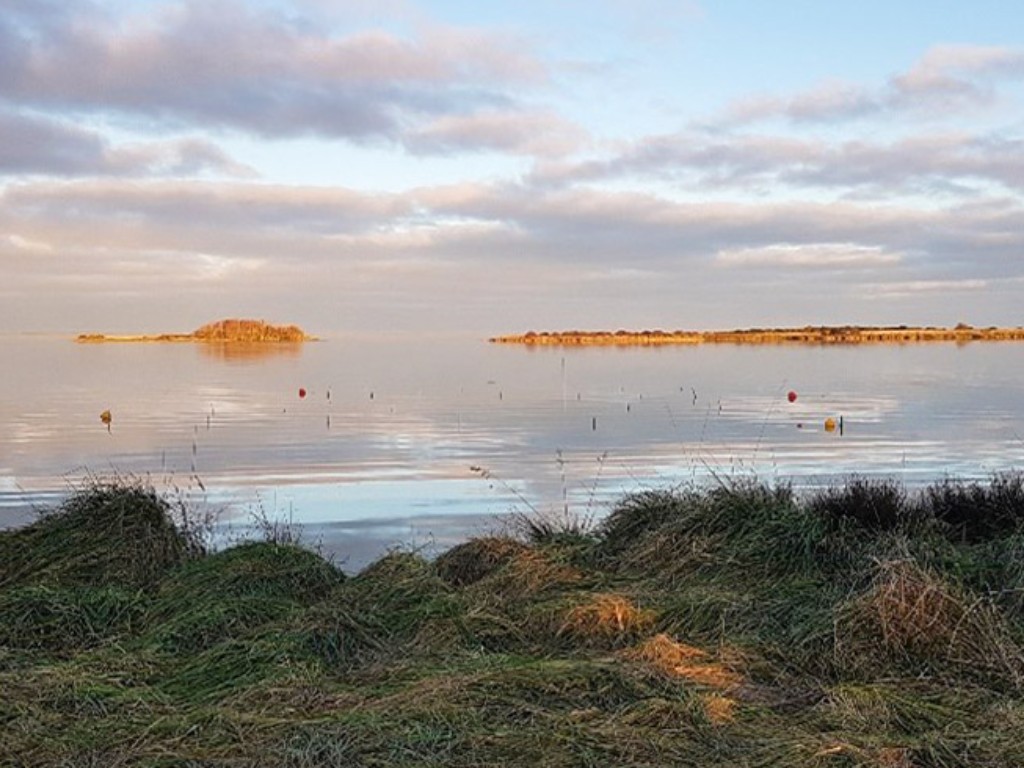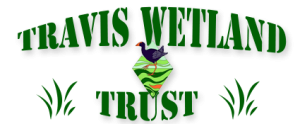 |
Work Day Reminder, August 20 2022
The next monthly work day will be from 9.00am – noon this coming Saturday.
On the work day we’ll be planting some Carex at the foot of the Mairehau Rd dune and releasing some plants nearby. If you arrive late there will be a notice on the Education Centre door indicating where we have gone.
All tools provided. It may be wet underfoot, so gumboots are advised. If you don’t own any we do have some for loan. Please bring your own gloves if you can.
Latest News
Report on Last Work Day, 16 July
It was a fine and frosty morning and volunteers were greeted by the sight of a pond turned skating rink in the horse paddock – fortunately no horses were present.
A brisk walk took our 16 volunteers around to the Inwoods Road entrance to the wetland. Two Cape Barren Geese were busy fluffing up their feathers to trap some warmth as we passed by. Ranger Kenny drove around with about 120 plants and a trailer with two full water tanks.
Our task was to do some infill planting in this dry, sandy area and to protect smaller plants with guards. The more savvy volunteers chose sunny areas initially while others braved the shaded and frozen spots. Sometimes the top layer of mulch peeled back in a frozen mat, speeding up access to the sandy soil beneath. Fast progress was made and soon all of our hardy plants were in the ground.
Weeding was the next job and there was plenty to be done, along with picking up rubbish. A chain of people with buckets of water were kept busy giving a much needed drink to the new plants to help them along. The keen young family we met last month turned up once more and helped out with this.
As ever the morning finished with refreshments and banter at the Education Centre. Thanks everyone.
Article: Sue Britain, Images: Dave Evans
Not Bird Food
I’m sure you already know Styrofoam isn’t good for our pūkeko.
It was a sight I hope to never see again. A pūkeko pecked a 3 cm hole through an ‘un-recyclable throw away’ food container. The contents must have been tasty; no missing pieces of the container were to be found; seems it could have been ingested by the bird?
Please pick up rubbish if you see it so our wildlife stays healthy.
Article: Eleanor Bissell
Life in the Shallows
The new book “Life in the Shallows” is a fundraiser for the National Wetland Trust and you can purchase your copies directly from the NWT here. All proceeds will go to the NWT and will be used to help continue wetland advocacy and education.
Each chapter profiles wetland heroes and scientists – living, recent past and ancestral experts – and the wonders of the wetlands they discovered. It’s easy to read, slightly quirky, and the authors hope it will inspire young people to consider a career in science.
Each chapter ends with a wetland to visit, where you can experience some aspect of each scientist’s work in real life. There’s loads of stunning wetland photos (all donated by amazing and generous NZ professional and amateur photographers).
The authors were interviewed on RNZ National by Kathryn Ryan on 13 July.
Colin Meurk in The Press
Recently Travis Wetland Trust president Colin Meurk had an opinion piece in The Press:
Our history unfolds before us as we step into the future. What part does biodiversity have to play in this story?
Not only is a rich array of species vital to life’s systems and services, but the Earth’s resources are finite, which means we must fit within the planetary boundaries and respect the biodiversity with which we share the planet. Engaging with a bit of wild nature in our cities can help us understand our place within the interdependent biosphere and appreciate its natural processes and limits.
You can read the full article on the Stuff website here.
Initiative to Re-establish Underwater Vegetation in Te Waihora
Years ago I was amazed to hear that the extreme 1968 storm that led to the sinking of the Lyttelton ferry Wahine at the entrance of Wellington harbour also completely destroyed plant vegetation on the bed of Te Waihora / Lake Ellesmere. Those beds of kōrepo (Ruppia megacarpa) have never grown back. Kōrepo is a tall submerged plant that stabilises bottom sediments helps keep water clean, and provides good habitat for fish and other aquatic organisms.
It’s hoped an ambitious, underwater planting trial at Te Waihora/Lake Ellesmere will help restore the mauri and ecosystem of this precious water body. NIWA scientists are working to re-establish beds of kōrepo in the lake and you can read an article about it on the ECan website.
Images from Grahame
